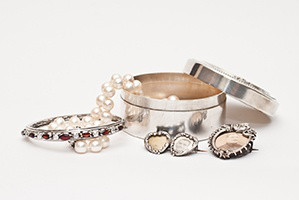 Whether it’s a pocket watch passed down to you from your great-grandfather, an engraved necklace from your parents, or that perfect engagement ring your spouse spent months picking out, we all have possessions we value. Like anything valuable, our most treasured items deserve to be protected. One of the easiest ways to do just that is to make sure our cherished belongings are properly insured against loss, theft, damage, and the unexpected.
Whether it’s a pocket watch passed down to you from your great-grandfather, an engraved necklace from your parents, or that perfect engagement ring your spouse spent months picking out, we all have possessions we value. Like anything valuable, our most treasured items deserve to be protected. One of the easiest ways to do just that is to make sure our cherished belongings are properly insured against loss, theft, damage, and the unexpected.
Review Your Existing Policy
Reviewing your existing insurance policy will help give you a clear understanding of exactly when you’re covered and how much you’re covered for. Typically, homeowners and renters insurance policies provide coverage for jewelry and other valuable items, but only up to a certain dollar amount, and the items are subject to the policy deductible. Depending on the value of your collection, you may need to take additional steps in order to fully insure your favorite items. A standard policy may cover items when stolen or damaged in certain incidents like house fires, but what about more everyday occurrences such as a stone falling out of its setting or the loss of a wedding ring to the ocean on your honeymoon?
Is Additional Coverage Necessary?
Once you’ve familiarized yourself with your existing policy, you’ll be able to determine whether or not your valuables require additional coverage. If the coverage on your policy is lower than the value of your collection, it’s smart to look into your options for further protection. High value items can be insured individually as part of your renters or homeowners policy. This is known as scheduling valuables or adding a rider or endorsement to your policy. Not only do these add-ons offer broader coverage, but the majority provide what’s called “mysterious disappearance” coverage—meaning if your wedding ring does somehow end up on the floor of the deep blue sea, you’re covered. And if it scheduled separately you can obtain a $0 deductible, meaning you have no out-of-pocket expense required to replace it.
If you do choose to schedule your valuables, it’s important to make sure your rider or endorsement includes agreed value coverage. This ensures that should something happen to one of your scheduled, appraised items, you will be reimbursed for the agreed value shown on your policy—you’ve “agreed” in advance to what the “value” of the item actually is. Without agreed value coverage, the way the loss settlement provision is written in your policy may allow your insurance company to replace your item for less than its true value.
Appraisals
In order to determine whether your coverage is sufficient, you will need to get your items appraised to confirm how much they are worth. A jeweler or gemologist can provide an appraisal, or you can ask your insurance professional for a reputable recommendation. An assessment of the value of your jewelry typically takes into account the Four C’s: cut, color, clarity, and carat weight. Appraisers also consider the history of the item, known as it’s provenance. Jewelry from an estate such as Elizabeth Taylor’s, for instance, is often worth more than a similar piece with a less interesting history. Items also tend to increase in value with time, so be sure your collection undergoes appraisal at least once every three years, or make sure that your policy includes inflation protection. Appraisals are useful tools when it comes to insuring items to value, not just the price you paid for them.
Storage
It is important to keep higher valued items in a safe when they are not being used or worn. Depending on the level of protection, some insurance companies will offer additional premium credits for safe (or safety deposit box storage), central burglar alarms, etc. If you already have your valuables scheduled or on a separate policy, check with your advisor to make sure you are receiving all applicable discounts.
Just as the possessions we care so deeply about warrant protection, we deserve the peace of mind that comes from knowing we’ve done our part to keep them safe.



